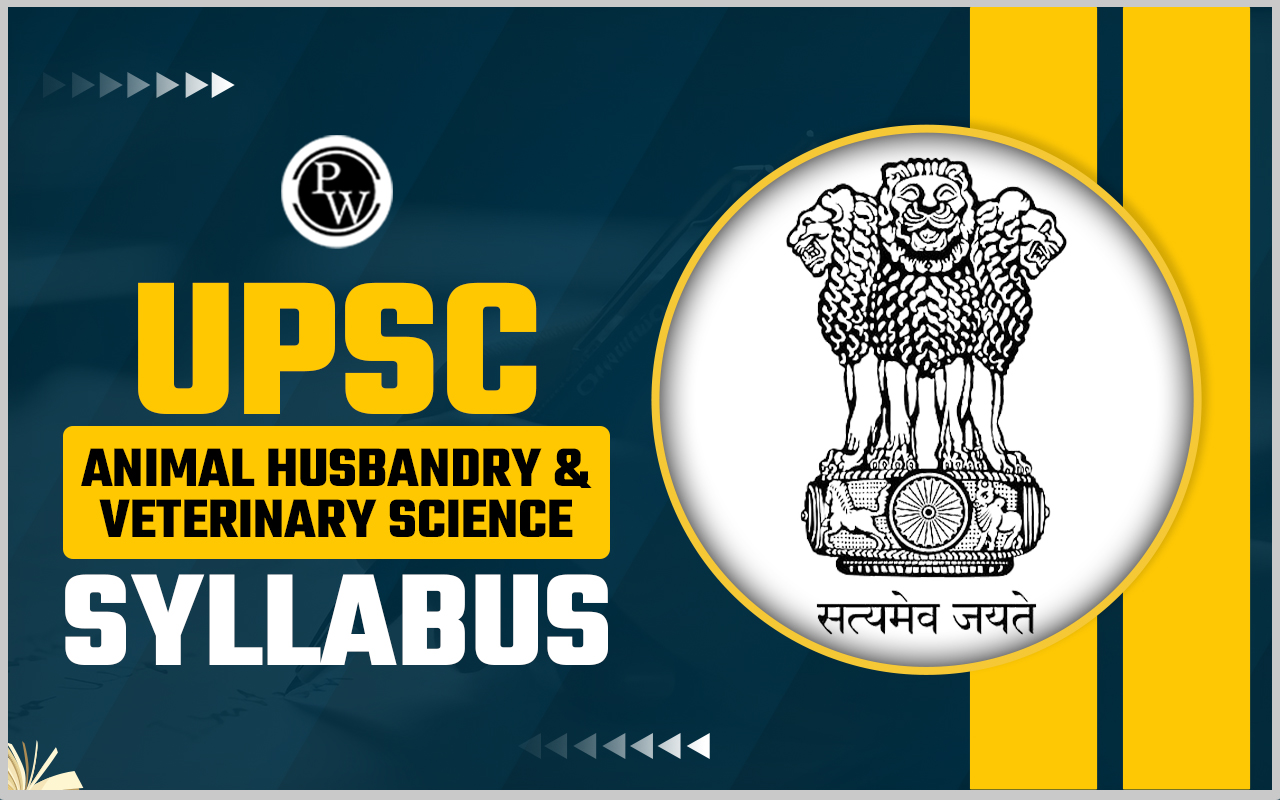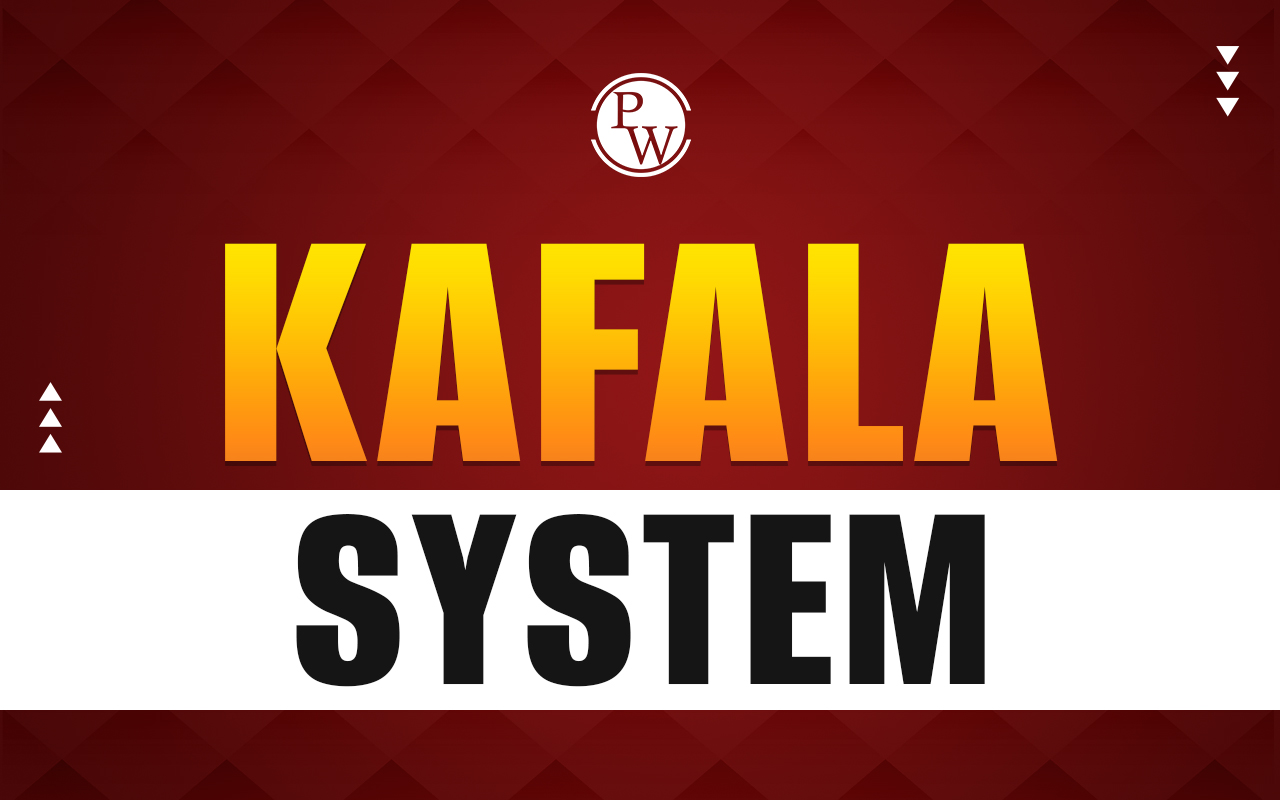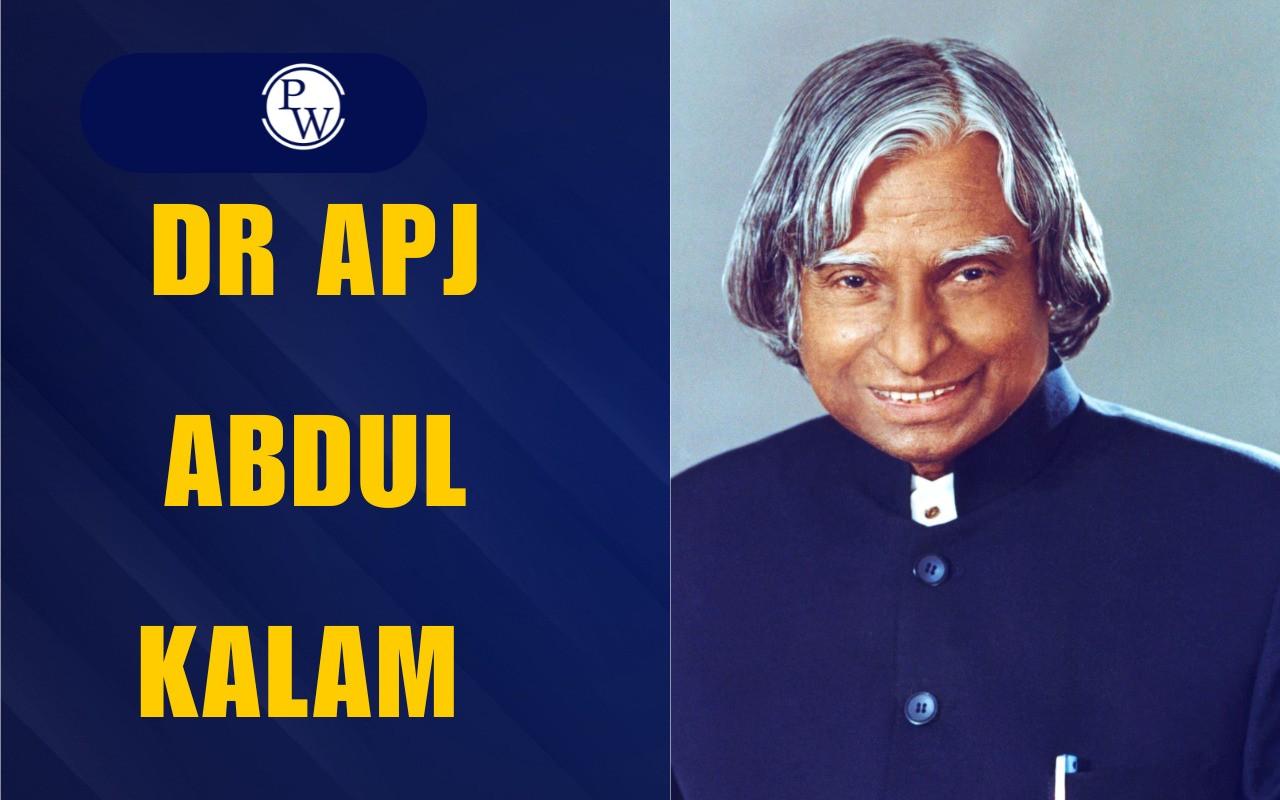

Animal husbandry involves the care and management of livestock by humans, focusing on their nurturing and well-being. In contrast, Veterinary Science pertains to the scientific practices of diagnosing, treating, and preventing diseases in animals and birds. This field encompasses the study of animal physiology, as well as methods for addressing and preventing health issues in animals.
Offered as an elective for the UPSC Civil Services Mains Exam, Animal Husbandry and Veterinary Science requires specialized knowledge and is particularly suited for candidates with a background in the subject.
UPSC Animal Husbandry and Veterinary Science Optional Syllabus 2025
Animal Husbandry and Veterinary Science Optional Paper I is about topics concerning animal nutrition , physiology , reproduction , livestock production and management, as well as genetics and animal breeding . Paper II in Animal Husbandry and Veterinary Science encompasses topics such as anatomy, pharmacology , hygiene , animal diseases , veterinary public health , milk products and their associated technology, as well as meat hygiene and its corresponding technology. Let us have a look at the complete Syllabus of Animal Husbandry and Veterinary Science Optional for UPSC Mains Exam.UPSC Animal Husbandry and Veterinary Science Optional Syllabus 2025 for Paper I
The table below contains the syllabus of Animal Husbandry and Veterinary Science Optional Paper I for UPSC Mains Exam:| Animal Husbandry and Veterinary Science Optional Paper I | |
|
1.1 Partitioning of food energy within the animal . Direct and indirect calorimetry. Carbon—nitrogen balance and comparative slaughter methods. Systems for expressing the energy value of foods in ruminants, pigs, and poultry. Energy requirements for maintenance, growth, pregnancy, lactation, egg, wool, and meat production. |
| 1.2 Latest advances in protein nutrition . Energy protein interrelationships. Evaluation of protein quality. Use of NPN compounds in ruminant diets. Protein requirements for maintenance, growth, pregnancy, lactation, egg, wool, and meat production. | |
| 1.3 Major and trace minerals —Their sources, physiological functions, and deficiency symptoms. Toxic minerals. Mineral interactions. Role of fat-soluble and water-soluble vitamins in the body, their sources, and deficiency symptoms. | |
| 1.4 Feed additives —methane inhibitors, probiotics, enzymes, antibiotics, hormones, oligosaccharides, antioxidants, emulsifiers, mold inhibitors, buffers, etc. Use and abuse of growth promoters like hormones and antibiotics—latest concepts. | |
| 1.5 Conservation of fodders . Storage of feeds and feed ingredients. Recent advances in feed technology and feed processing. Anti-nutritional and toxic factors are present in livestock feeds. Feed analysis and quality control. Digestibility trials—direct, indirect, and indicator methods. Predicting feed intake in grazing animals. | |
| 1.6 Advances in ruminant nutrition . Nutrient requirements. Balanced rations. Feeding of calves, pregnant, work animals, and breeding bulls. Strategies for feeding milch animals during different stages of the lactation cycle. Effect of feeding on milk composition. Feeding of goats for meat and milk production. Feeding sheep for meat and wool production. | |
| 1.7 Swine Nutrition. Nutrient requirements. Creep, starter, grower, and finisher rations. Feeding of pigs for lean meat production. Low-cost rations for swine. | |
| 1.8 Poultry nutrition. Special features of poultry nutrition. Nutrient requirements for meat and egg production. Formulation of rations for different classes of layers and broilers. | |
|
2.1 Physiology of blood and its circulation, respiration, excretion. Endocrine glands in health and disease. |
| 2.2 Blood constituents —Properties and functions-blood cell formation. Haemoglobin synthesis and chemistry-plasma proteins production, classification and properties, coagulation of blood; Haemorrhagic disorders—anticoagulants—blood groups—Blood volume—Plasma expanders-Buffer systems in blood. Biochemical tests and their significance in disease diagnosis. | |
| 2.3 Circulation —Physiology of heart, cardiac cycle, heart sounds, heart-beat, electrocardiograms. Work and efficiency of heart—effect of ions on heart function. Metabolism of cardiac muscle, nervous and chemical regulation of heart, the effect of temperature and stress on heart, blood pressure and hypertension, osmotic regulation, arterial pulse, vasomotor regulation of circulation, shock. Coronary and pulmonary circulation, Blood-Brain barrier Cerebrospinal fluid-circulation in birds. | |
| 2.4 Respiration —Mechanism of respiration, Transport, and exchange of gases-Neural control of respiration-Chemo-receptors Hypoxia Respiration in birds. | |
| 2.5 Excretion —Structure and function of kidney-Formation of urine: methods of studying renal function-renal regulation of acid-base balance; Physiological constituents of urine-Renal failure-Passive venous congestion-Urinary secretion in chicken-Sweat glands and their function. Biochemical test for urinary dysfunction. | |
| 2.7 Endocrine glands —Functional disorders—their symptoms and diagnosis. Synthesis of hormones, mechanism and control of secretion—hormonal receptors-classification and function. | |
| 2.8 Growth and Animal Production —Prenatal and postnatal growth, maturation, growth curves, measures of growth, factors affecting growth, conformation, body composition, meat quality. Physiology of Milk Production, Reproduction and Digestion—Current status of hormonal control of mammary development, milk secretion, and milk ejection. Male and Female reproductive organs, their components, and functions. Digestive organs and their functions. | |
| 2.9 Environmental Physiology —Physiological relations and their regulation; Mechanisms of adaptation; Environmental factors and regulatory mechanisms involved in animal behavior; Climatology—various parameters and their importance. Animal ecology. Physiology of behavior. Effect of stress on health and production. | |
|
Semen quality —Preservation and Artificial Insemination—Components of semen, the composition of spermatozoa, chemical and physical properties of ejaculated semen, factors affecting semen in vivo and in vitro. Factors affecting semen production and quality, preservation, the composition of diluents, sperm concentration, and transport of diluted semen. Deep freezing techniques in cows, sheep, goats, swine, and poultry. Detection of oestrus and time of insemination for better conception. Anoestrus and repeat breeding. |
|
4.1 Commercial Dairy Farming —Comparison of dairy farming in India with advanced countries. Dairying under mixed farming and as specialized farming, economic dairy farming. Starting of a dairy farm, Capital and land requirement, organization of the dairy farm. Opportunities in dairy farming, factors determining the efficiency of dairy animals. Herd recording, budgeting cost of milk production, pricing policy, Personnel Management. Developing Practical and Economic rations for dairy cattle; Supply of greens throughout the year, feed and fodder requirements of Dairy Farm. Feeding regimes for young stock and bulls, heifers, and breeding animals; New trends in feeding young and adult stock; Feeding records. |
| 4.2 Commercial meat, egg, and wool production —Development of practical and economic rations for sheep, goats, pigs, rabbits, and poultry. Supply of greens, fodder, and feeding regimes for young and mature stock. New trends in enhancing production and management. Capital and land requirements and socio-economic concepts. | |
| 4.3 Feeding and management of animals under drought, flood, and other natural calamities. | |
|
5.1 History of animal genetics. Mitosis and Meiosis: Mendelian inheritance; Deviations to Mendelian genetics; Expression of genes; Linkage and crossing over; Sex determination, sex influenced and sex-limited characters; Blood groups and polymorphism; Chromosome aberrations; Cytoplasmic inheritance, Gene and its structure; DNA as a genetic material; Genetic code and protein synthesis; Recombinant DNA technology. Mutations, types of mutations, methods for detecting mutations and mutation rate, Transgenesis. |
| 5.2 Population Genetics Applied to Animal Breeding—Quantitative Vs. Qualitative traits ; Hardy Weinberg Law; Population Vs. Individual; Gene and genotypic frequency; Forces changing gene frequency; Random drift and small populations; Theory of path coefficient; Inbreeding, methods of estimating inbreeding coefficient, systems of inbreeding; Effective population size; Breeding value, estimation of breeding value, dominance, and epistatic deviation; Partitioning of variation; Genotype X environment correlation and genotype X environment interaction; The role of multiple measurements; Resemblance between relatives. | |
| 5.3 Breeding Systems—Breeds of livestock and Poultry. Heritability, repeatability, and genetic and phenotypic correlations, their methods of estimation and precision of estimates; Aids to selection and their relative merits; Individual, pedigree, family, and within family selection; Pregnancy testing; Methods of selection; Construction of selection indices and their uses; Comparative evaluation of genetic gains through various selection methods; Indirect selection and correlated response; Inbreeding, outbreeding, upgrading, cross-breeding and synthesis of breeds; Crossing of inbred lines for commercial production; Selection for general and specific combining ability; Breeding for threshold characters. Sire index. | |
|
Basic philosophy, objectives, concept, and principles of extension. Different Methods were adopted to educate farmers under rural conditions. Generation of technology, its transfer, and feedback. Problems and constraints in transfer of technology. Animal husbandry programs for rural development. |
UPSC Animal Husbandry and Veterinary Science Optional Syllabus 2025 for Paper II
The table below contains the syllabus of Animal Husbandry and Veterinary Science Optional Paper II for UPSC Mains Exam:| Animal Husbandry and Veterinary Science Optional Paper II | |
|
1.1 Histology and Histological Techniques: Paraffin embedding technique of tissue processing and H.E. staining—Freezing microtome—Microscopy Bright field microscope and electron microscope. Cytology-structure of cell organelles and inclusions; cell division-cell types—Tissues and their classification-embryonic and adult tissues—Comparative histology of organs—Vascular, Nervous, digestive, respiratory, musculoskeletal, and urogenital systems—Endocrine glands—Integumentary—sense organs. |
| 1.2 Embryology: Embryology of vertebrates with special reference to aves and domestic mammal’s gametogenesis-fertilization-germ layers-foetal membranes and placentation-types of the placenta in domestic mammals-Teratology-twins and twinning-organogenesis-germ layer derivatives-endodermal, mesodermal and ectodermal derivatives. | |
| 1.3 Bovine Anatomy: Regional Anatomy: Paranasal sinuses of OX— surface anatomy of salivary glands. Regional anatomy of infraorbital, maxillary, mandi-tubuloalveolar, mental, and corneal nerve block. Regional anatomy of paravertebral nerves, pudendal nerve, median, ulnar and radial nerve tibial, fibular, and digital nerves—Cranial nerves-structures involved in epidural anaesthesia-superficial lymph nodes-surface anatomy of visceral organs of thoracic, abdominal, and pelvic cavities-comparative-features of locomotor apparatus and their application in the biomechanics of the mammalian body. | |
| 1.4 Anatomy of Fowl: Musculo-skeletal system-functional anatomy in relation to respiration and flying, digestion, and egg production. | |
| 1.5 Pharmacology and therapeutics drugs: Cellular level of pharmacodynamics and pharmacokinetics. Drugs acting on fluids and electrolyte balance. Drugs acting on the Autonomic nervous system. Modern concepts of anesthesia and dissociative anesthetics. Autacoids. Antimicrobials and principles of chemotherapy in microbial infections. Use of hormones in therapeutics—chemotherapy of parasitic infections. Drug and economic concerns in the Edible tissues of animals—chemotherapy of Neoplastic diseases. Toxicity due to “insecticides, plants, metals, non-metals, zootoxins, and mycotoxins.” | |
| 1.6 Veterinary Hygiene with reference to water, air, and habitation: Assessment of pollution of water, air, and soil—Importance of climate in animal health—effect of environment on animal function and performance relationship between industrialization and animal agriculture—animal housing requirements for specific categories of domestic animals viz. pregnant cows and sows, milking cows, broiler birds—stress, strain and productivity in relation to animal habitation. | |
|
2.1 Etiology, epidemiology pathogenesis, symptoms, postmortem lesions, diagnosis, and control of infectious diseases of cattle, sheep and goat, horses, pigs and poultry |
| 2.2 Etiology, epidemiology, symptoms, diagnosis, treatment of production diseases of cattle, horse, pig, and poultry. | |
| 2.3 Deficiency diseases of domestic animals and birds. | |
| 2.4 Diagnosis and treatment of non-specific conditions like impaction, Bloat, Diarrhoea, Indigestion, dehydration, stroke, and poisoning. | |
| 2.5 Diagnosis and treatment of neurological disorders. | |
| 2.6 Principles and methods of immunization of animals against specific diseases —hard immunity—disease-free zones— ‘zero’ disease concept—chemoprophylaxis. | |
| 2.7 Anaesthesia —local, regional, and general-pre-anaesthetic medication. Symptoms and surgical interference in fractures and dislocation. Hernia, choking abomasal displacement—Caesarian operations. Rumenotomy—Castrations. | |
| 2.7 Disease investigation techniques —Materials for laboratory investigation—Establishment. Animal Health Centres—Disease-free zone. | |
|
3.1 Zoonoses – Classification, definition, the role of animals and birds in prevalence and transmission of zoonotic diseases—occupational zoonotic diseases. |
| 3.2 Epidemiology – Principle, the definition of epidemiological terms, application of epidemiological measures in the study of diseases, and disease control. Epidemiological features of air, water, and foodborne infections. OIE regulation, WTO, sanitary and phytosanitary measures. | |
| 3.3 Veterinary Jurisprudence – Rules and Regulations for improvement of animal quality and prevention of animal diseases—State and Central Rules for prevention of animal and animal product borne diseases—S.P. C.A.—Veterolegal cases—Certificates—Materials and Methods of collection of samples for vetero legal investigation. | |
|
4.1 Market Milk – Quality, testing, and grading of raw milk. Processing, packaging, storing, distribution, marketing defects, and their control. Preparation of the following kinds of milk: Pasteurized, standardized, toned, double-toned, sterilized, homogenized, reconstituted, recombined, and flavored kinds of milk. Preparation of cultured kinds of milk, cultures and their management, yogurt, Dahi, Lassi, and Srikhand. Preparation of flavoured and sterilized kinds of milk. Legal standards. Sanitation requirements for clean and safe milk and for the milk plant equipment |
| 4.2 Milk Products Technology – Selection of raw materials, processing, storing, distributing, and marketing milk products such as Cream, Butter, Ghee, Khoa, Channa, Cheese, condensed, evaporated, dried milk and baby food, ice cream, and Kulfi; by-products, whey products, buttermilk, lactose, and casein. Testing, grading, and judging milk products—BIS and Agmark specifications, legal standards, quality control nutritive properties. Packaging processing and operational control. Costing of dairy products. | |
|
5.1 Meat Hygiene
|
5.2 Meat Technology
|
|
| 5.3 By‐products – Slaughterhouse by-products and their utilization—Edible and inedible by-products—Social and economic implications of proper utilization of slaughterhouse by-products—Organ products for food and pharmaceuticals. | |
| 5.4 Poultry Products Technology – Chemical composition and nutritive value of poultry meat, pre-slaughter care, and management. Slaughtering techniques, inspection, and preservation of poultry meat and products. Legal and BIS standards. Structure composition and nutritive value of eggs Microbial spoilage. Preservation and maintenance. Marketing of poultry meat, eggs, and products. | |
| 5.5 Rabbit/Fur Animal Farming – Rabbit meat production. Disposal and utilization of fur and wool and recycling of waste by-products. Grading of wool. | |
Animal Husbandry and Veterinary Science Optional Exam Pattern
The UPSC Mains exam pattern of Animal Husbandry and Veterinary Science Optional is as follows:- The UPSC main exam is divided into two papers i.e. Paper-1 and Paper-2.
- Both Paper I and Paper II carry 250 marks each, making the total of 500 marks for the Animal Husbandry and Veterinary Science optional papers.
- In both Paper I and Paper II of Animal Husbandry and Veterinary Science Optional candidates have to attempt FIVE questions in all. THREE hours are allotted to attempt each paper.
- Question Number 1 and Question Number 5 from both papers are compulsory to attempt and out of the remaining questions, THREE are to be attempted choosing at least ONE question from each Section.
| Animal Husbandry and Veterinary Science Optional Exam Pattern | |
| Particular | Details |
| Total Papers | Two, Paper I and Paper II |
| Total Marks | 500 (250 Each) |
| Time allowed | 3 Hours for each paper |
| Sections | Section A and Section B |
| Questions | Total 8 questions with subparts |
| Compulsory Question | Question No. 1 and 5 |
| Marks Distribution | 10, 15, and 20 marker questions |
Recommended Books for Animal Husbandry and Veterinary Science Optional
The table below contains the list of books for Animal Husbandry and Veterinary Science Optional for UPSC Mains Exam preparation:| S. No | Title | Author(s) | Publisher |
| 1 | A guide on forest Entomology | Regupathy | - |
| 2 | A Textbook Of Animal Husbandry | G C Banerjee | - |
| 3 | Advanced Animal Nutrition | D. V Reddy | - |
| 4 | Agricultural Economics | S Subba Reddy | - |
| 5 | Animal husbandry & veterinary science | T.N. Palanivelu | - |
| 6 | Animal Husbandry | Gyan Deep Singh | Anmol Publishers |
| 7 | Animal Physiology | K. A. Goyal | Rastogi Publishing |
| 8 | Animal Physiology | Kavita Juneja | Anmol Publishers |
| 9 | Basics Of Animal Physiology | Monalisa Kar | Anmol Publishers |
| 10 | Biotech’s Dictionary Of Animal Husbandry | - | Daya Publications |
| 11 | Biotechnology Expanding Horizons | B D Singh, Kalyani Publishers | - |
| 12 | Essentials Of Plant Breeding | Phundan Singh, Kalyani Publishers | - |
| 13 | Fundamentals of Agriculture Volume-1 | Arun Katyayan | Kushal Publications |
| 14 | Fundamentals Of Agriculture Volume-2 | Arun Katyayan | Kushal Publications |
| 15 | General Agriculture | Muniraj S Rathore | Jain Brothers |
| 16 | Handbook Of Agriculture | - | ICAR |
| 17 | Handbook Of Animal Husbandry | Manoj Kumar Rai | Oxford Book Company |
| 18 | Horticulture At A Glance Volume II | A S Salaria | Jain Brothers |
| 19 | Indian forestry – A breakthrough approach to forest service | K. S Manikandan, S. Prabhu | - |
| 20 | Introduction To Agriculture | A K Vyas | Jain Brothers |
| 21 | Milk And Milk Products Technology | Subhash Biswas | Jaypee Brothers |
| 22 | Principles Of Agronomy | Yellamanda Reddy | Kalyani Publishers |
| 23 | Principles Of Animal Nutrition & Feed Technology | D V Reddy | Oxford |
| 24 | Principles Of Genetics & Animal Breeding | F H KHAN | Jaypee Brothers |
| 25 | Textbook Of Animal Diseases | Ashok Kumar | Sonali Publication |
Animal Husbandry and Veterinary Science Optional Previous Question Paper
The table contains the list of Animal Husbandry and Veterinary Science Optional Papers I and II of Previous years:| Animal Husbandry and Veterinary Science Optional Paper 2023 | |
| Animal Husbandry and Veterinary Science Optional Paper I | Animal Husbandry and Veterinary Science Optional Paper II |
| Animal Husbandry and Veterinary Science Optional Paper 2022 | |
| Animal Husbandry and Veterinary Science Optional Paper I | Animal Husbandry and Veterinary Science Optional Paper II |
| Animal Husbandry and Veterinary Science Optional Paper 2021 | |
| Animal Husbandry and Veterinary Science Optional Paper I | Animal Husbandry and Veterinary Science Optional Paper II |
| Animal Husbandry and Veterinary Science Optional Paper 2020 | |
| Animal Husbandry and Veterinary Science Optional Paper I | Animal Husbandry and Veterinary Science Optional Paper II |
Animal Husbandry and Veterinary Science Optional Success Rate in UPSC Mains
The table contains the success rate of Candidates who opted for Animal Husbandry and Veterinary Science as their optional subject in UPSC Mains Exam in the previous years:| Year | Total Candidates Appeared | Candidates Cleared (Success Rate) |
| 2017 | 23 | 2 (8.7%) |
| 2016 | 65 | 8 (12.3%) |
| 2015 | 52 | 12 (23.1%) |
| 2014 | 28 | 4 (14.3%) |
| 2013 | 32 | 5 (15.6%) |
| 2012 | 52 | 12 (23.1%) |
| 2011 | 50 | 5 (10%) |
| 2010 | 69 | 7 (10.1%) |
UPSC Preparation Strategy for Animal Husbandry and Veterinary Science Optional
Preparing for the Animal Husbandry and Veterinary Science optional subject for UPSC Mains requires a systematic approach and comprehensive understanding of the subject matter. Here's a strategy you can follow:- Understand the Syllabus: Familiarise yourself with the UPSC syllabus for Animal Husbandry and Veterinary Science optional thoroughly. This will help you understand the scope of the subject and prioritise topics accordingly.
- Collect Study Material: Gather standard textbooks, reference books, study materials, and previous years' question papers for the optional subject.
- Make a Study Plan: Create a study plan covering all the topics mentioned in the syllabus. Allocate specific time slots for each topic based on their importance and your understanding level. Ensure to include regular revisions in your plan.
- Focus on Core Concepts: Understand the fundamental concepts thoroughly before moving on to advanced topics. Topics like animal breeding, genetics, nutrition, veterinary anatomy, physiology, and pathology are crucial.
- Refer to Current Affairs: Stay updated with the latest developments in the field of animal husbandry, veterinary science, and related government policies. Incorporate current affairs related to these topics in your preparation.
- Notes Making: Effective note-taking in animal husbandry and veterinary science is very important for students to organize and retain vast amounts of information, such as animal behavior, health protocols, and treatment methods. These notes serve as valuable references during examinations. It saves a lot of time and effort while revsion.
- Practice Diagrams and Flowcharts: Animal Husbandry and Veterinary Science is a subject where diagrams and flowcharts play a significant role. Practice drawing diagrams and flowcharts to explain concepts effectively. This will also help you in scoring better in the exam.
- Solve Previous Years' Papers: Solve previous years' question papers to understand the exam pattern, question types, and to improve your time management skills. It will also give you an idea about the topics that are frequently asked in the exam.
- Practice Answer Writing with Strategy: Regularly take mock tests and solve previous year's questions to identify strengths and weaknesses in answering. Develop a strategy to focus on strong areas while addressing weaker ones. Plan to tackle questions that yield the highest marks effectively and track your performance regularly for improvement.
UPSC Animal Husbandry & Veterinary Science Syllabus FAQs
Is Animal Husbandry a good optional for UPSC?
Yes, Animal Husbandry can be a good optional subject for the UPSC, particularly for candidates with a background or interest in agriculture, veterinary science, or rural development. It offers a diverse range of topics including livestock management, animal nutrition, and veterinary science, which are relevant for the exam.
Is veterinary an optional subject in UPSC?
No, veterinary science separately is not an optional subject in the UPSC. Instead Animal Husbandry and Veterinary Science combined is an optional Subject in UPSC.
What is Animal Husbandry and Veterinary Science?
Animal husbandry is the management and care of livestock for food, fiber, work, and companionship, focusing on breeding, feeding, and housing. Veterinary science involves diagnosing, treating, and preventing diseases and injuries in animals, ensuring their health and welfare. Both fields contribute to sustainable agriculture and animal welfare.
What is the syllabus of Animal Husbandry and Veterinary Science for UPSC?
The Animal Husbandry and Veterinary Science Optional syllabus for UPSC includes topics like Animal Genetics and Animal Breeding, Veterinary Anatomy, Physiology, and Pharmacology, Management of Livestock, Production of Livestock, Animal Diseases, Veterinary Public Health, and Extension, etc. Additionally, candidates are expected to have a good understanding of current advancements, policies, and issues in the field.
Can I write UPSC after BVSc?
Yes, you can. BVSc graduates are eligible for the Civil Services Examination (CSE) conducted by the Union Public Service Commission (UPSC). There are no specific restrictions barring BVSc graduates from appearing in the exam. However, clearing the UPSC CSE requires comprehensive preparation covering various subjects like history, geography, polity, economy, and current affairs
Talk to a counsellorHave doubts? Our support team will be happy to assist you!

Check out these Related Articles
Free Learning Resources
PW Books
Notes (Class 10-12)
PW Study Materials
Notes (Class 6-9)
Ncert Solutions
Govt Exams
Class 6th to 12th Online Courses
Govt Job Exams Courses
UPSC Coaching
Defence Exam Coaching
Gate Exam Coaching
Other Exams
Know about Physics Wallah
Physics Wallah is an Indian edtech platform that provides accessible & comprehensive learning experiences to students from Class 6th to postgraduate level. We also provide extensive NCERT solutions, sample paper, NEET, JEE Mains, BITSAT previous year papers & more such resources to students. Physics Wallah also caters to over 3.5 million registered students and over 78 lakh+ Youtube subscribers with 4.8 rating on its app.
We Stand Out because
We provide students with intensive courses with India’s qualified & experienced faculties & mentors. PW strives to make the learning experience comprehensive and accessible for students of all sections of society. We believe in empowering every single student who couldn't dream of a good career in engineering and medical field earlier.
Our Key Focus Areas
Physics Wallah's main focus is to make the learning experience as economical as possible for all students. With our affordable courses like Lakshya, Udaan and Arjuna and many others, we have been able to provide a platform for lakhs of aspirants. From providing Chemistry, Maths, Physics formula to giving e-books of eminent authors like RD Sharma, RS Aggarwal and Lakhmir Singh, PW focuses on every single student's need for preparation.
What Makes Us Different
Physics Wallah strives to develop a comprehensive pedagogical structure for students, where they get a state-of-the-art learning experience with study material and resources. Apart from catering students preparing for JEE Mains and NEET, PW also provides study material for each state board like Uttar Pradesh, Bihar, and others
Copyright © 2025 Physicswallah Limited All rights reserved.










